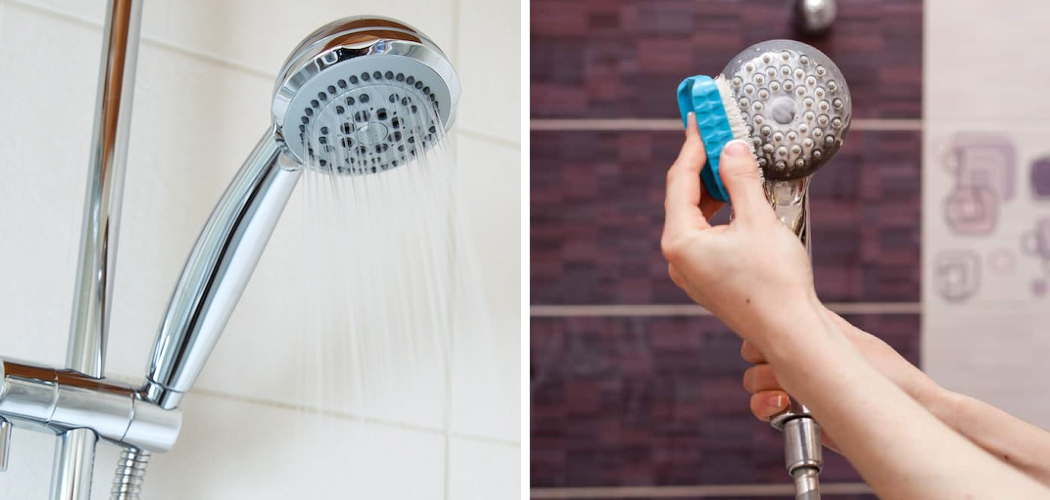Are you in the middle of a shower and notice the water pressure is suddenly feeble? Chances are your shower head has become clogged with mineral deposits, preventing it from performing at its best. While repairing a clogged showerhead can seem like an intimidating fix, there’s no need to worry!
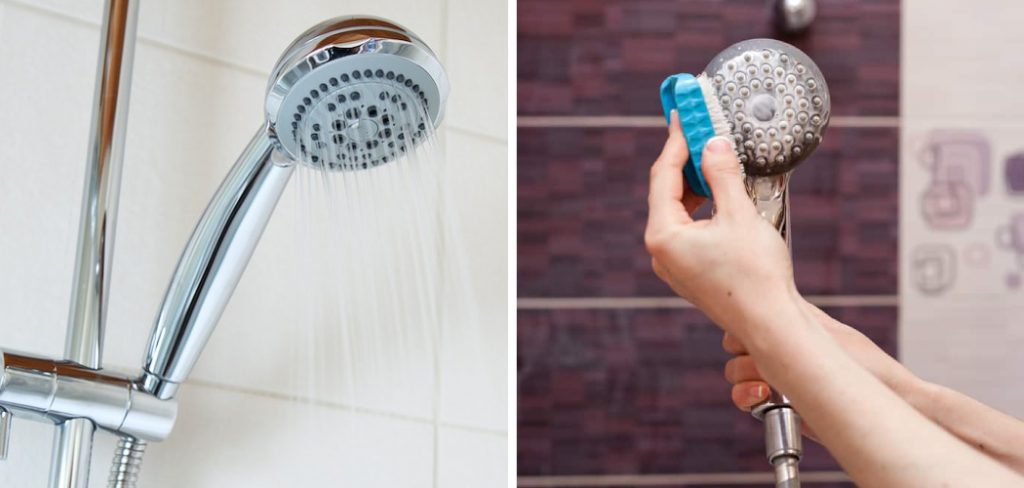
In this post, we’ll show you how to unclog a shower head without vinegar, without resorting to harsh chemical cleaners or vinegar-based DIY solutions – because who has time for that anyway? Keep reading to learn all the easy steps you need to take so that you can get back in the hot steamy action as soon as possible.
The Bad Effect of Using Chemicals
Before you reach for the harsh chemicals, consider this: the combination of water and chemical cleaners can be hazardous to your health. Even if the cleaner is labeled non-toxic, it’s not good for you to be inhaling those fumes every time you take a shower.
And as most of us know, vinegar can be a potent acid that can cause skin irritation and damage to the showerhead. It will also leave a strong smell in your bathroom, which is not something you want to be dealing with.
Can You Unclog a Shower Head Without Vinegar?
Yes, you can! There are several ways to unclog a shower head without using vinegar and other harsh chemicals. One of the best methods is using boiling water. Boiling water will loosen up the minerals that have accumulated in the nozzle, allowing them to be easily washed away. You can also use a mixture of baking soda and water to dissolve the deposits.
Required Items
- Boiling Water or a Baking Soda and Water Mixture
- A Plastic Bag
- Rubber Band
5 Tips on How to Unclog a Shower Head Without Vinegar
Step 1: Fill the Pot
Fill a pot with water and bring it to a rolling boil. It will only take a few minutes. Fill it with enough water to fill the showerhead nozzle once it’s submerged. Remember to use caution when handling the pot and pouring the boiling water.
Step 2: Soak the Nozzle
Take the plastic bag and fill it with boiling water. Make sure it’s securely tied at the top. Then, submerge the showerhead nozzle in hot water for about fifteen minutes so that it can soak up all the minerals.
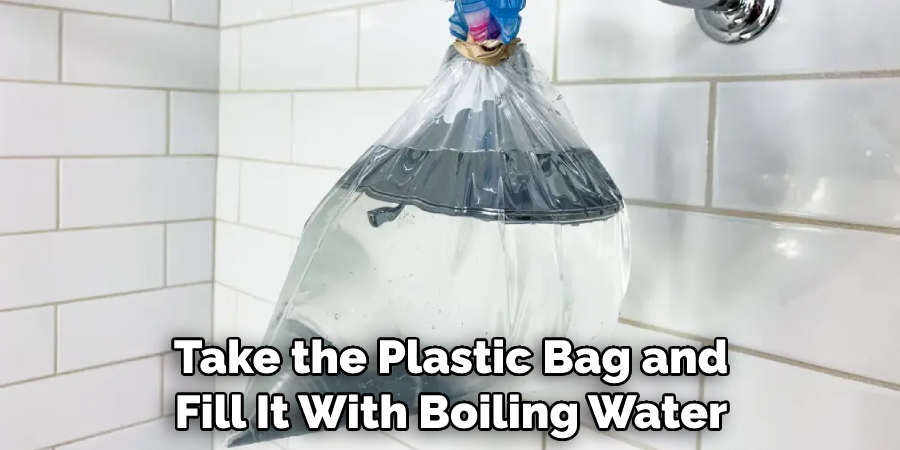
Step 3: Remove & Clean
Carefully remove the showerhead nozzle from the bag of boiling water and rinse it off with warm water. You can also use a soft-bristled brush to scrub away any stubborn deposits that may remain. Be sure not to use too much force, as this could damage your showerhead.
Step 4: Reattach Showerhead Nozzle
Once the nozzle is clean and dry, attach it to the showerhead using a rubber band. Make sure it’s securely fastened so that no water can escape. Then turn on your shower and check for leaks. If all is well, you’re done!
Step 5: Check for Leaks
If you still notice water leaking after reattaching the nozzle, it may be a sign that your showerhead is damaged. At this point, it’s best to replace the entire unit with a new one.
And there you have it! With these five simple steps, you can unclog a showerhead without vinegar. No longer do you have to worry about dealing with harsh chemicals or spending money on expensive repairs? Now get back in the shower and enjoy that hot water coming out at full blast!
5 Additional Tips on Unclogging a Shower Head Without Vinegar
1. Unscrew the Shower Head
Take apart the shower head. This will give you direct access to any clogs within the pipes or the shower head itself. Doing this is relatively easy, simply use a wrench or pliers to unscrew it from the wall and disassemble it.
2. Attempt a Manual Removal
Suppose you are still unable to restore water pressure, attempt manual removal. Use a thin wire or even an unwound paperclip to try and poke out any debris which is stuck within the shower head or pipes. Be careful not to damage the shower head in the process.
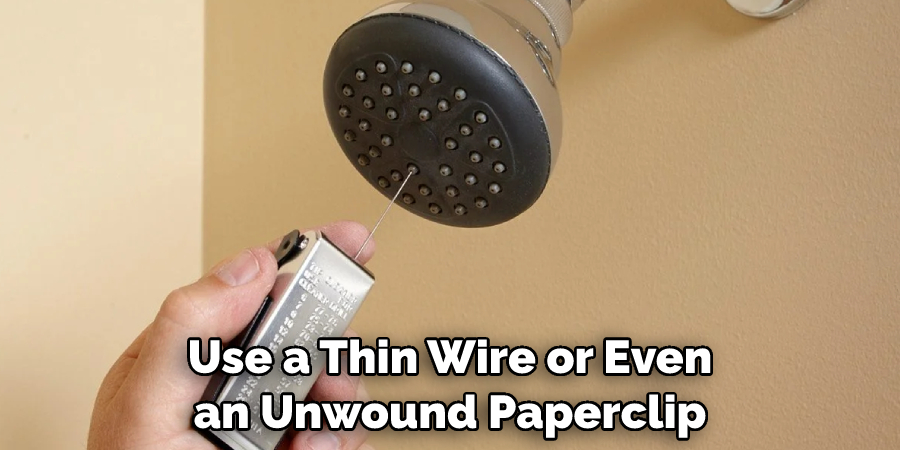
3. Use Backing Soda and Water
Mix a solution of baking soda and water in equal parts. Soak the shower head or pipes in this mixture for 20 minutes to help soften any debris. Use an old toothbrush to scrub away any stubborn clogs. Afterward, rinse the shower head off with warm water to make sure all of the residues are removed.
4. Apply Plumber’s Tape
If the shower head is still clogged, apply a few layers of plumber’s tape around the threads to create a watertight seal. This will help to prevent any future leaks or clogs in the pipes and shower heads.
5. Reinstall the Parts
Once you are done cleaning the shower head and pipes, reassemble them and reinstall them back on the wall. Make sure to tighten all of the screws securely to avoid any future leakage. Now, enjoy your newly unclogged shower head!
8 Maintenance Tips
1. Clean Your Shower Head Regularly
Using a damp cloth or an old toothbrush, wipe down the fixtures and faucets every couple of weeks to remove any residue and mineral deposits that can build up over time.
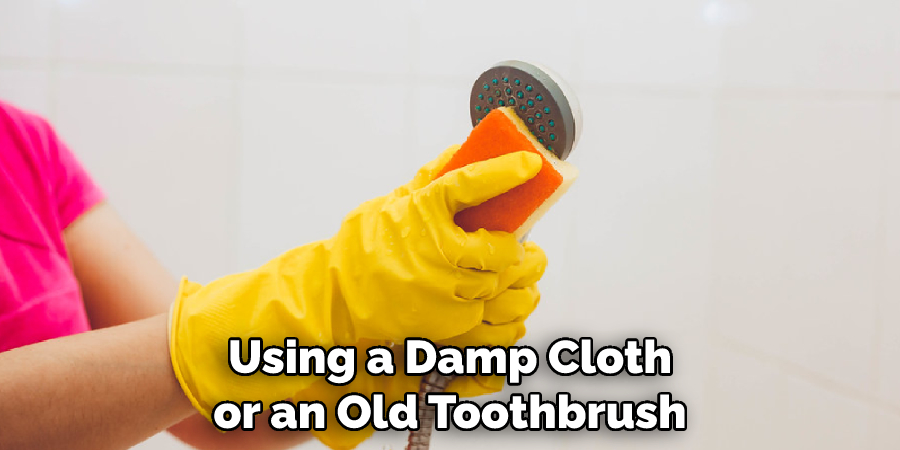
2. Check for Signs of Blockage
If you notice water pressure reducing over time, it may indicate that your shower head is blocked. Blockage can occur due to the accumulation of mineral deposits, limescale, bacteria, and other debris.
3. Remove Any Visible Residue or Blockage
If you see any signs of buildup on the shower head, use a soft brush or cloth to remove it gently before further cleaning.
4. Clean With Soap and Warm Water
Fill a bowl or bucket with warm water mixed with a mild dish soap and submerge the shower head into the mixture. Allow it to soak for 15-20 minutes before scrubbing gently with a soft brush.
5. Try an Abrasive Cleaning Solution
If soap and water don’t do the trick, you may need to try using a more abrasive solution. A combination of baking soda and white vinegar with a few drops of dish soap can help to break down stubborn deposits.
6. Try Descaling Solutions
If you’re still having trouble removing the buildup, consider using a descaling solution designed specifically for cleaning shower heads. Follow the instructions on the packaging before scrubbing with a soft brush.
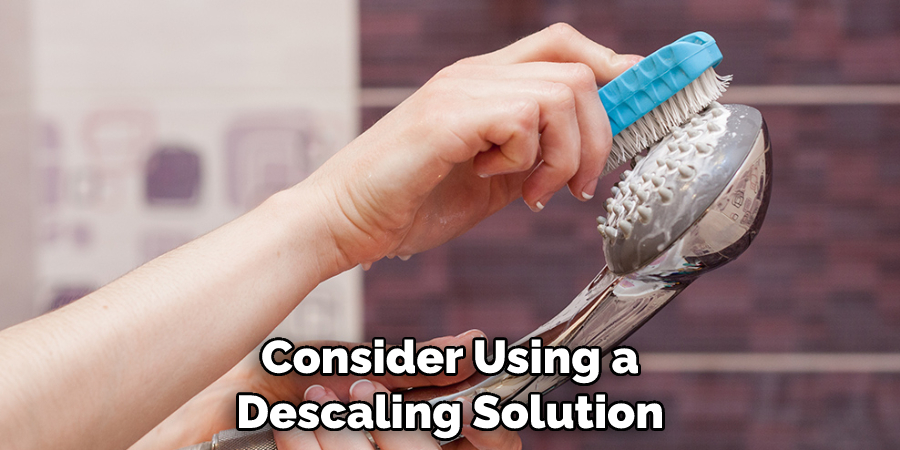
7. Don’t Use Harsh Chemical Cleaners
Chemical cleaners like bleach, ammonia, and other harsh solutions should be avoided as they can damage the metal of your shower head and discolor it over time.
8. Install a Filter on the Water Line Leading to the Shower Head
This will help to prevent the accumulation of mineral deposits and other materials that can cause blockage. Make sure to replace the filter regularly for optimal performance.
Following these maintenance tips will help keep your shower head in good condition and prevent it from getting blocked. If you’re still having trouble unclogging the shower head, try using a plunger to dislodge any buildup and then flush it with hot water. With the right tools and techniques, you can quickly and easily unclog a shower head without vinegar.
7 Safety Measures to Follow
1. Turn off the water supply to the shower head before you begin unclogging. This prevents any accidental flooding or property damage. If you don’t know how to turn off the water, contact a professional plumber for help.
2. Put on protective gear such as rubber gloves and safety glasses before you begin working on the shower head. This will protect you from any potential hazards associated with plumbing repairs.
3. Disassemble the parts of the shower head carefully, taking special care not to cause any damage. Make sure to label each part as you disassemble it, so that you know how to put them back together.
4. Soak the parts of the showerhead in hot water for about 10 minutes. This will help loosen any dirt or debris that is clogging the head and make it easier to remove.
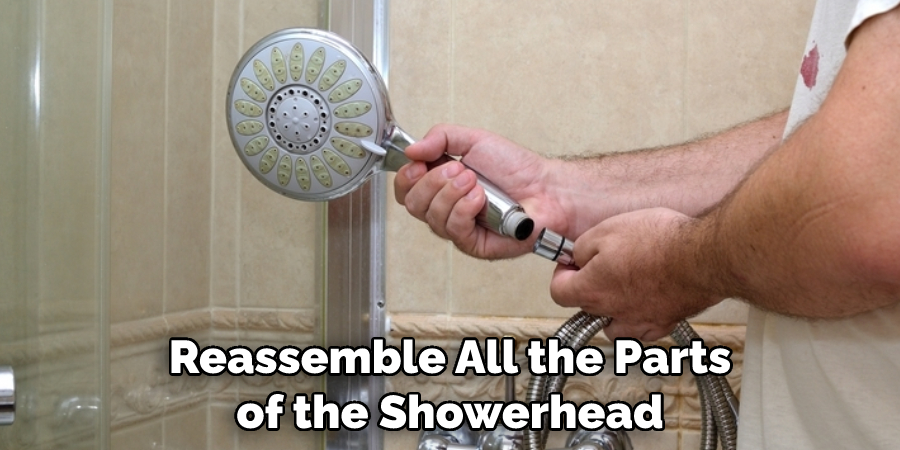
5. Use a pair of needle-nose pliers to carefully remove any debris from inside the shower head. Make sure not to scratch or damage the pipes as you work.
6. Reassemble all the parts of the showerhead and turn on the water supply again. Test out your newly unclogged shower head by running some water through it.
7. If the shower head is still clogged after following all these steps, then you may need to call a professional plumber for assistance. They will be able to determine what is causing the blockage and help you find a solution. With their help, your unclogging problem can be solved in no time!
Following these steps will ensure that you can unclog your shower head without using vinegar or any other harsh chemicals. This way, you can save time and money while still ensuring the safety of your home and its plumbing system. And with a bit of patience and effort, you can get rid of those clogs quickly.
Frequently Asked Questionss
How Long Will It Take to Finish the Project?
This depends on the severity and complexity of the clog. Typically, it takes about 15 minutes to unclog a showerhead without vinegar. It may also take up to an hour, depending on the type of clog and the method used.
How Can I Prevent Clogs in My Shower Head?
To prevent future clogs, you should clean your shower head regularly with a soft cloth soaked in warm soapy water. You should also use a water filter or shower head filter to remove any impurities from the water that may cause clogs. Additionally, you can use a shower head descaler to prevent mineral buildup in your shower head.
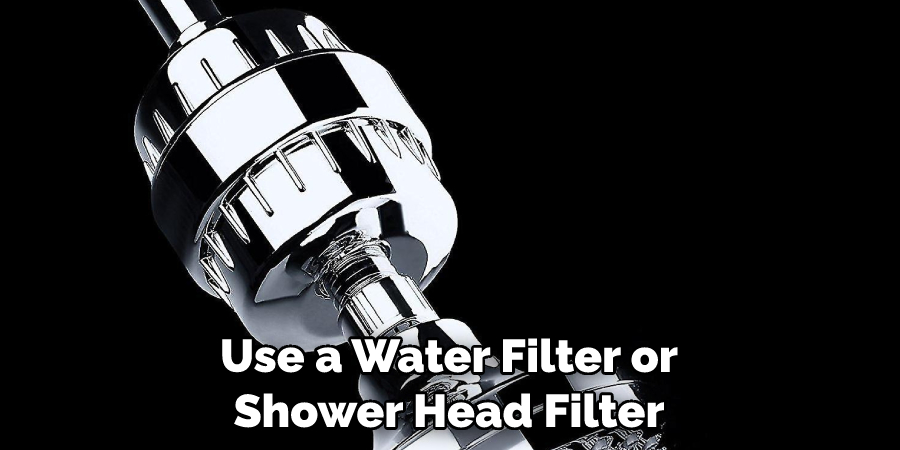
Can I Use Vinegar to Unclog My Shower Head?
Yes, you can use vinegar to unclog a shower head. However, it is not recommended as the acidic nature of vinegar may damage your pipes and showerhead over time. It is better to for cleaning instead. Also, make sure to flush the showerhead with hot water after unclogging it.
Conclusion
From using tried-and-true techniques such as cleaning the head with a brush and running hot water down the pipe to more advanced methods like boiling water or using an air compressor, it is possible to unclog a shower head without vinegar. Consider trying one of these strategies to remove blockages from your shower head for a quick and easy cleanup job.
Ultimately, if all else fails and the showerhead is still clogged, you may need to replace it altogether. This guide should have given you the information needed to take on this common plumbing issue without requiring any special tools. Hopefully, now you have a better understanding of how to unclog a shower head without vinegar so that it functions properly once again.

